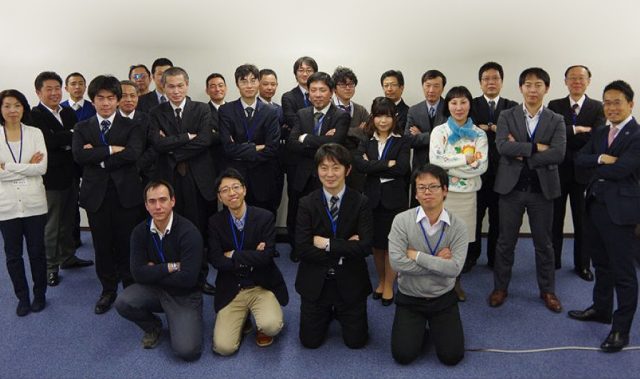
AsianScientist (Jun. 21, 2017) – By transferring a gene from butterflies to silkworms, researchers from the Kyoto Institute of Technology have created a hydrogel that can support the growth of stem cells without the risk of contamination from prions or viruses. Their findings were published in the Proceedings of the National Academy of Science.
Like oil and water, moths and butterflies don’t really mix. But what happens if you transfer a butterfly’s gene to the larvae of a moth? A team of researchers led by Professor Eiji Kotani have shown that this interspecies gene transfer can be used to silence target genes in a tissue-specific manner.
When a mature silkworm enters the pupal stage of its life cycle, it encloses itself in a cocoon made up of raw, white silk which comprises of the proteins fibroin and sericin. While fibroin is the main, structural ingredient of raw silk, it is sericin that acts as a gum coating and glues the fibroin fibres together for added cohesion.
Yet, things were different for the bioengineered silkworms that came from Kotani’s lab. These silkworms had been made to express a butterfly enzyme called pierisin-1A (P1A) in their silk glands; and when it was time for Kotani’s transgenic silkworms to spin silk, the researchers found that their silkworms had spun themselves thinner, brownish-white cocoons that did not have fibroin.

“P1A acted as a cytotoxin, repressing the synthesis of fibroin so that our silkworms made their cocoons solely out of sericin,” Kotani told Asian Scientist Magazine.
Using these fibroin-free cocoons, the researchers were able to extract soluble sericin, using it to produce a hydrogel that could support the growth of embryonic stem cells.
“Scaffolds containing mammal-derived components—such as collagen or coagulation factors—may present a risk when applied to humans because they could be contaminated by prions or viruses,” explained Kotani. “Our findings suggest that sericin gels could be used as a pathogen-free substitute for scaffolding.”
Furthermore, due to the sericin hydrogel’s ability to hold water 250 times its own weight, Kotani sees another potential application of sericin in cosmetics. “The water-holding power of sericin is higher than that of collagen. From this property, we predict that the sericin of our silkworms would be useful for making cosmetic products,” he said.
Importantly, this research marks the first successful use of cytotoxic genes to control the expression of genes in a tissue-specific manner in animals. Having had success with their transgenic silkworms, Kotani and his team hope to find out if the P1A enzyme could be used to make other model organisms with similar tissue-specific dysfunction.
———
Copyright: Asian Scientist Magazine; Photo: Eiji Kotani/Kyoto Institute of Technology.
Disclaimer: This article does not necessarily reflect the views of AsianScientist or its staff.
The article can be found at Otsuki et al. (2017) Bioengineered Silkworms with Butterfly Cytotoxin-Modified Silk Glands Produce Sericin Cocoons with a Utility for a New Biomaterial.











